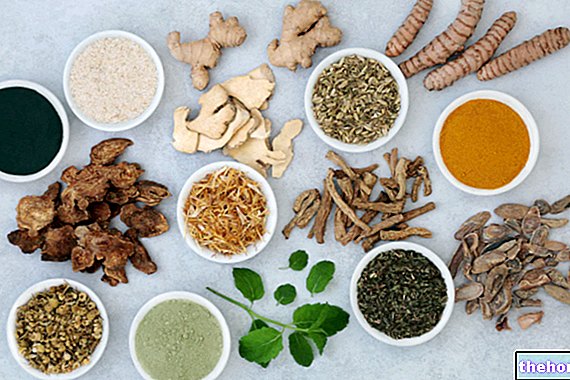Eating therefore not only serves to replenish energy and structural reserves but also serves to influence the general regulatory systems of the organism (nervous, immune, endocrine systems), including DNA, as epigenetics has shown. This alone can provide an "idea of the enormous importance" of good nutrition for psycho-physical health.
, level of physical activity, environment and physiological conditions. It averages 1800 Kcal / day and typically falls in the 1400-2600 Kcal / day range.In this sense, with Basal Metabolism (MB) we mean the minimum consumption of energy in absolute rest (essential for metabolic functions, breathing, circulation and cc.), In the supine position and upon awakening after a fast of at least 12 hours (protein for 24 hours), in conditions of thermal neutrality. Basal metabolic rate varies with sex (in men it is higher), weight, ethnicity, age, climate, work, physical activity, lean body muscle mass. In a sedentary individual it can represent 70% of the total energy requirement.
The three most important metabolic sources for energy production are: blood glucose, cellular glycogen (present in the liver and muscles), fatty acids from adipose tissue.
1 Kcal (kilocalorie) = 1 Cal = 4.184 kj (kilojoule)
- 1g of lipids provides 9 Cal;
- 1g of carbohydrates provides 4 Cal;
- 1g of protein provides 4 Cal.
In general, sugars are the fuel for high intensity and short duration efforts, lipids for long duration and less intensity ones. Proteins, in normal physiological conditions, contribute to a limited extent during prolonged exercise.
A peculiar aspect of man is the bulky brain, its energy expenditure is 16 times that of muscle tissue per unit of weight; the cerebral metabolism, in conditions of rest, represents 20-25% of the energy needs of an adult (8- 10% more than other non-human primates).
In addition to energy, our body needs to take substances that reconstitute and reproduce those tissue cells that die every day.
(sugars, starch, cellulose). Important energy suppliers. If the reserves are exhausted, muscle proteins are used to synthesize them. There are two reserves in our body: hepatic glycogen (controls blood sugar) and muscle glycogen. They constitute a reduced energy reserve (10-12 hours, approx. 2000 Calories). The glycogen reserve in the adult is 350g of which only 70-80g (= 20%) in the liver.In a normal subject the plasma provides 180g of glucose per day = 720 Kcal of which 80% is used by the cells of the nervous system (which therefore strictly depends on blood glucose for its metabolic needs). Since the brain needs about 120g of glucose per day (in rest conditions it is 60% of the consumption of the whole organism), a fast of 24 h determines approx. the end of the reserves. After this period, the glucose needed by the brain is synthesized in the liver and kidney from non-carbohydrate precursors (amino acids, lactic acid, odd-chain fatty acids of carbon, glycerol) via gluconeogenesis. Only after a few days of fasting does the brain begin to use ketone bodies as fuel (after 3 days they cover 1/3 of the brain's energy needs with consequent renal loss of sodium ions, Na, for acid-base rebalancing).
One gram of sugars provides 4 Cal.
Lipids (fats)
Main energy source, insulating layer, mechanical protection. Large energy reserve (adipose tissue represents 20-25% of the body weight of an adult).
Unlike other lipids, only 30-40% of dietary cholesterol is absorbed. Phytosterols, of vegetable origin, reduce its absorption. Cholesterol is not essential in the diet as it is regularly produced by the organism (endogenous cholesterol). The two main chemical formulas of cholesterol: low density lipoprotein (LDL) = bad cholesterol (cholesterol that goes towards the peripheral tissues), and high density (HDL) = good cholesterol (cholesterol that goes from peripheral tissues to the liver).
One gram of fat provides 9 Cal.
Proteins
They have a plastic and transport function, enzymes. Digested and absorbed essentially in the small intestine after being broken down into amino acids (22 aa of which 9 essential).
Recommended Daily Intake (RDA): average of 1g / kg body weight; higher consumption for states of acute catabolism (surgical stress, severe trauma or debilitating disease).
The absorbed amino acids must be used immediately as they cannot accumulate in the organism as such. An excessive introduction or reduction of protein synthesis creates problems as they increase the terminal products of their metabolism (urea, uric acid, NH3 etc.), toxic, with overload of the excretory organs (in particular, meat proteins are associated with other nitrogenous substances, purines, + additives + toxic substances due to cooking). Proteins have a more plastic role than an energetic one.
One gram of protein provides 4 Cal.
Vitamins
Vitamins do not provide calories, they are bioregulatory. They are essential (today the specific syndromes for avitaminosis are rare while the relative deficiencies that involve tiredness, a sense of malaise, headache, etc. are common). A frequent deficiency is that in Vit D, a fat-soluble vitamin essential for fixing calcium in the bones.
Water-soluble vitamins: enzymatic cofactors, easily absorbed by the intestine, for most of them, the excessive amount is eliminated in the urine (Vit. C, B1, B2, B6, B12, PP, H, F, pantothenic acid, folic acid) .
Fat-soluble vitamins: absorbed in the intestine together with fats and then accumulated in the liver and adipose tissue in considerable quantities (risk of overdosing). They condition the integrity of cell membranes and subcellular particles; hardly alterable to temperature variations but sensitive to oxygen (Vit. A, D, E, K).
Mineral salts
Mineral salts do not provide calories but are activators of metabolic reactions and keep the osmotic pressure constant. Many are related to each other (the excess of one limits the absorption of the other or they have opposite actions). Today, relative deficiencies are possible.
Sodium (Na), Chlorine (Cl), Potassium (K), Calcium (Ca), Phosphorus (P), Magnesium (Mg), Iron (Fe), Zinc (Zn), Sulfur (Z), Iodine, Cobalt, Fluorine etc.
Waterfall
It does not provide calories but it is an essential component. It represents approx. 70% body weight in adults. It has the task of ensuring the thermal, hydro-saline, digestive and assimilative, purifying, etc. balance. In the human body there is no storage water and it is essential to guarantee the body the right hydration (1.5-2L / day on average).
Other articles on "Proper Nutrition"
- Healthy nutrition food pyramid
- Food Food Pyramid
- Combinations and food allergies
- Nutrition advice










.jpg)


















